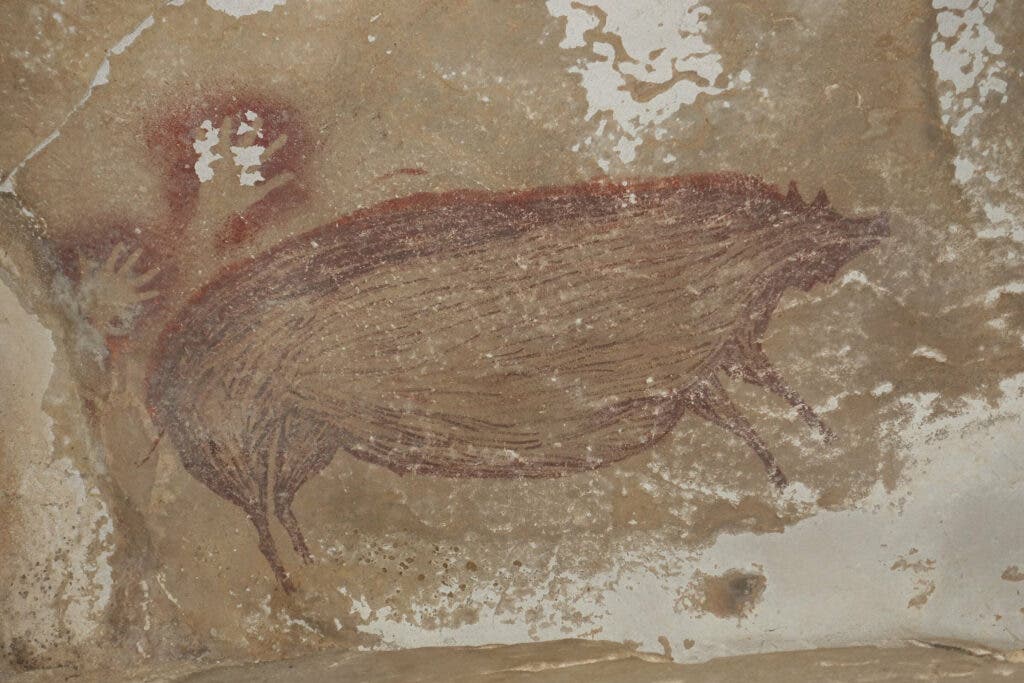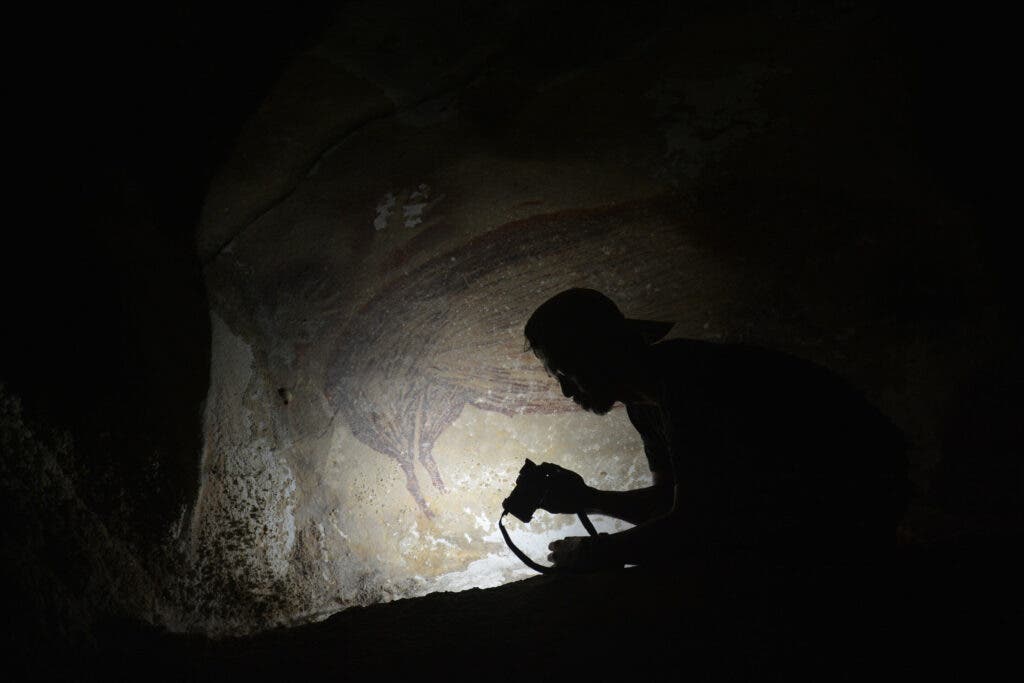The lush environment of Indonesia harbors some of the oldest known cave art. Now, it can officially boast having the oldest known cave art. Dated to 45,500 years ago, this prehistoric figurative painting depicts a Sulawesi warty pig — and researchers say there should be more like it in the area.

Sulawesi is an Indonesian island east of Borneo. Rich in lush vegetation and karst environment, it would have been an excellent home for early humans. Unsurprisingly, then, the island has a long history of human occupation, with stone artifacts dating up to 194,000 years ago, possibly from a yet-unidentified ancient human species.
The Leang Tedongne cave, where the painting was discovered, lies in a narrow valley, enclosed by steep limestone cliffs — exactly the type of karstic landscape you’d expect to find caves in. Doctoral Student Basran Burhan came across the painting during 2017 surveys carried out with local authorities and members of the local Bugis community.
The cave is only accessible during the dry season as the valley gets flooded during rainy season. In fact, it’s so inaccessible that Bugis members told researchers the cave had never been seen by Westeners before.

Measuring 136 by 54 centimeters (53 by 21 inches), the Sulawesi warty pig is painted in a single dark red color. It has a short crest of upright hair and a pair of horn-like warts, which help researchers identify the species of the pig. There are also two hand prints near the pig, as well as two partially preserved pigs, suggesting that it could have been a larger narrative scene.
The painting also features an artistic technique often found in ancient cave paintings, the researchers note in the study.
“It should be noted that the artists portrayed preorbital warts in the so-named twisted perspective. This is a common method of graphical representation in prehistoric art that entails using a single outline profile image of an animal to depict how it appears to an onlooker when observed from different viewpoints.”
“The pig appears to be observing a fight or social interaction between two other warty pigs,” said co-author Adam Brumm.
Sulawesi warty pigs have been hunted for tens of thousands of years in Indonesia, and have even been domesticated in some regions. It’s unsurprising then that these creatures feature prominently in cave art.
The researchers also analyzed a couple of other cave paintings, dating them and identifying the depicted species. The previous oldest cave art was dated from 43,900 years ago, also from Indonesia.
Could be even older
Since the maximum age that can be dated using carbon dating is 50,000 years, the cave painting was dated using another method: uranium dating. However, the team didn’t date the paint itself to prevent any damage, but rather the layer of calcite that formed on top of the painting. This means that the painting itself “could be much older because the dating that we’re using only dates the calcite on top of it,” they say.

But even if the painting dates from so long ago, the people who made it were, by any definition, people. The team believes the artwork was made by Homo sapiens and not another, now-extinct human species like Denisovans (or another unidentified species) but cannot say this for certain at this moment. Regardless of what species made it, they were still people, researchers conclude.
“The people who made it were fully modern, they were just like us, they had all of the capacity and the tools to do any painting that they liked,” he added.
Since the depicted scene also features a couple of handprints, researchers are hoping to get some DNA samples and see what species created the art. In order to produce these handprints, the artists would have had to place their hand on the wall and then spit pigment over it — traces of that may yet be discovered, shedding new light on this ancient episode of human evolution.

The study has been published in Science Advances.


